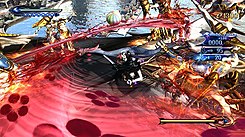Super Smash Bros. is a crossover platform fighting game series published by Nintendo. The series was created by Masahiro Sakurai, who has directed every game in the series. The series is known for its unique gameplay objective which differs from that of traditional fighters, in that the aim is to increase damage counters and knock opponents off the stage instead of depleting life bars.
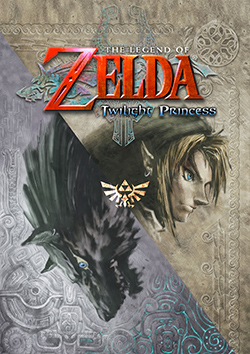
The Legend of Zelda: Twilight Princess is a 2006 action-adventure game developed and published by Nintendo for the GameCube and Wii. Originally planned for release exclusively on the GameCube in November 2005, Twilight Princess was delayed by Nintendo to allow its developers to refine the game, add more content, and port it to the Wii. The Wii version was a launch game in North America in November 2006, and in Japan, Europe, and Australia the following month. The GameCube version was released in December 2006 as the final first-party game for the console.

Wii Sports is a 2006 sports simulation video game developed and published by Nintendo for the Wii video game console. The game was released in North America along with the Wii on November 19, 2006, and in Japan, Australia, and Europe the following month. It was included as a pack-in game with the console in all territories except Japan, making it the first sports game included with the launch of a Nintendo system since Mario's Tennis for the Virtual Boy in 1995. The game was later released on its own as part of the Nintendo Selects collection of games.
Hideki Kamiya is a Japanese video game designer and director. He began his career in 1994 with Capcom, where he directed Resident Evil 2 (1998), Devil May Cry (2001), Viewtiful Joe (2003), and Ōkami (2006). From 2004 to 2006, he worked for the Capcom subsidiary Clover Studio.

PlatinumGames Inc. is a Japanese video game developer that was founded in October 2007 as result of a merger between two companies, Seeds Inc. and Odd Inc. Shinji Mikami, Atsushi Inaba, and Hideki Kamiya founded Seeds Inc. after the closure of Capcom's Clover Studio, while Odd Inc. was founded by Tatsuya Minami. A year after the studio was founded, video game publisher Sega announced that it would be publishing four intellectual properties developed by the company: MadWorld, Infinite Space, Bayonetta, and Vanquish. Their partnership later extended to include Anarchy Reigns. Most of these games were met with positive reception. Over the years, PlatinumGames had developed an expertise in action games and one of their key philosophies was that the team would not follow conventional game design concepts.

The GameCube controller is the standard game controller for the GameCube home video game console, manufactured by Nintendo and launched in 2001. As the successor to the Nintendo 64 controller, it is the progression of Nintendo's controller design in numerous ways. The contentious M-shaped design of its predecessor was replaced with a more conventional handlebar style controller shape; a second analog stick was added, replacing the C buttons with a C stick and the X and Y face buttons, last seen on the Super Nintendo controller, were reintroduced; the shoulder buttons were changed to hybrid analog triggers. A wireless variant of the GameCube controller known as the WaveBird was released in 2002.
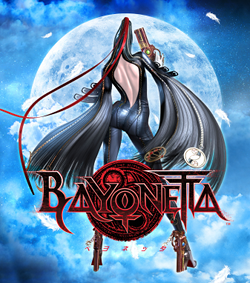
Bayonetta is a 2009 action-adventure hack and slash video game developed by PlatinumGames and published by Sega. It was released for PlayStation 3 and Xbox 360 in Japan in October 2009, and in North America and Europe in January 2010. It was released on Wii U in September 2014, Windows in April 2017, Nintendo Switch in February 2018, and PlayStation 4 and Xbox One in February 2020.

Bayonetta, born Cereza, is the titular character and main protagonist of the Bayonetta video game series developed by PlatinumGames. She was created by Hideki Kamiya and designed by Mari Shimazaki. Hellena Taylor voiced the character in English for the first two games and several appearances outside the series from 2009 to 2018, while Jennifer Hale voiced her in Bayonetta 3 (2022). She is voiced by Atsuko Tanaka in Japanese.
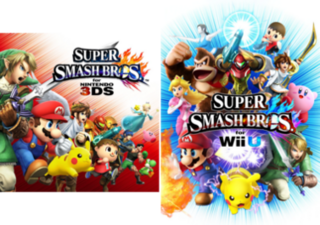
Super Smash Bros. for Nintendo 3DS and Super Smash Bros. for Wii U, both commonly referred together as Super Smash Bros. 4, are 2014 crossover platform fighter video games developed by Bandai Namco Studios and Sora Ltd. and published by Nintendo for the Nintendo 3DS and Wii U video game consoles. It is the fourth installment in the Super Smash Bros. series, succeeding Super Smash Bros. Brawl. The Nintendo 3DS version was released in Japan on September 13, 2014, and in North America, Europe, and Australia the following month. The Wii U version was released in North America, Europe, and Australia in November 2014 and in Japan the following month.

Rayman Legends is a platform video game developed by Ubisoft Montpellier and published by Ubisoft. It is the fifth main title in the Rayman series and the direct sequel to the 2011 game Rayman Origins. The game was released for Microsoft Windows, PlayStation 3, Xbox 360, Wii U, and PlayStation Vita platforms in August and September 2013. PlayStation 4 and Xbox One versions were released in February 2014, with a Stadia version released in November 2021. A Nintendo Switch port, titled Rayman Legends Definitive Edition, was released in North America, Europe and Australia on September 12, 2017.

The Wonderful 101 is an action-adventure game developed by PlatinumGames and published by Nintendo for the Wii U. The game was directed by Hideki Kamiya and produced by Atsushi Inaba. It was released in August 2013 in all major regions except North America, where it released the following month. The Wonderful 101 received generally positive reviews. It failed to meet sales expectations.

Off-TV Play is a feature of Nintendo's eighth-generation video game console, the Wii U. Like all video game consoles, the Wii U uses a console and a controller to manipulate an image on a television screen. The Wii U's unique feature is that its controller, the Wii U GamePad, has its own built-in screen for displaying images. It can display an entirely different image, or duplicate the television screen into the Wii U GamePad. Off-TV Play is the term used for when an entire game is played strictly on the controller, without the use of a television. The GamePad also features two speakers that can be used for Off-TV Play. There is no standardized way to activate Off-TV Play and how it's implemented depends on the game.

Mario Kart 8 is a 2014 kart racing game developed and published by Nintendo for the Wii U. It retains the gameplay of previous games in the Mario Kart series, with players controlling a Mario franchise character in races around tracks. Tracks are themed around locales from the Super Mario platform series and are populated with power-ups that help players gain advantages in races. Different difficulties are selectable prior to a race; harder difficulties make gameplay faster. In the new anti-gravity sequences, players drive on walls and ceilings. Mario Kart 8 contains a variety of single-player and local and online multiplayer games modes, including Grand Prix racing and arena-based battle modes.

The Electronic Entertainment Expo 2014 was the 20th E3 held. The event took place at the Los Angeles Convention Center in Los Angeles, California. It began on June 10, 2014, and ended on June 12, 2014, with 48,900 total attendees.

Super Mario 3D World is a 2013 platform game developed and published by Nintendo for the Wii U. It is the sixth original 3D platform game in the Super Mario series and the sequel to Super Mario 3D Land (2011) for the Nintendo 3DS.

Bayonetta: Bloody Fate is a 2013 anime film produced by Gonzo, based on PlatinumGames' 2009 video game, Bayonetta. The film was directed by Fuminori Kizaki with screenplay by Mitsutaka Hirota.
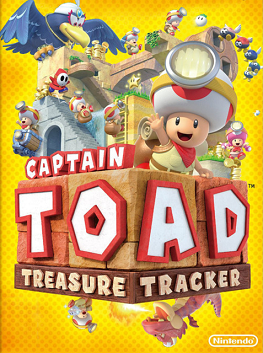
Captain Toad: Treasure Tracker is a 2014 action puzzle video game developed and published by Nintendo for the Wii U. The game was re-released for the Nintendo Switch and Nintendo 3DS in 2018 with additional content. It is a spin-off of the Super Mario series and a part of the larger Mario franchise. The game stars Captain Toad and Toadette as they complete levels, defeat enemies and save each other from the antagonist Wingo. Each level is contained within a miniature diorama-like environment that requires puzzle-solving and platforming challenges to complete. The player also uses the Wii U GamePad to rotate the camera and reveal new information and interact with the environment.

Star Fox Zero is a 2016 rail shooter video game developed by Nintendo and PlatinumGames for the Wii U. It is the sixth installment in the Star Fox series. Formally announced at E3 2015, the game was released in April 2016 to mixed critical reception, with the most polarizing aspect of the game being its control scheme. A standalone tower defense game, titled Star Fox Guard, was bundled with the game.

Bayonetta is an urban fantasy action-adventure video game series created by Hideki Kamiya. It is developed by PlatinumGames, owned by Sega, and currently published by Nintendo. The franchise was introduced in 2009 with Bayonetta, which was followed by two sequels, Bayonetta 2 (2014) and Bayonetta 3 (2022), as well as a spinoff, Bayonetta Origins: Cereza and the Lost Demon (2023). The games follow the titular character, a witch who wields dual pistols, shooters in her high heels, and long, magically transforming hair which becomes a deadly weapon.
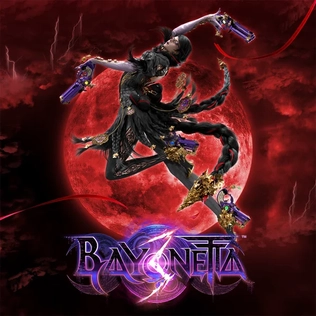
Bayonetta 3 is a 2022 action-adventure hack and slash video game developed by PlatinumGames and published by Nintendo for Nintendo Switch. The game was directed by Yusuke Miyata and produced by Yuji Nakao, with the Bayonetta creator Hideki Kamiya as supervising director. It was announced in December 2017, and was released on October 28, 2022.

